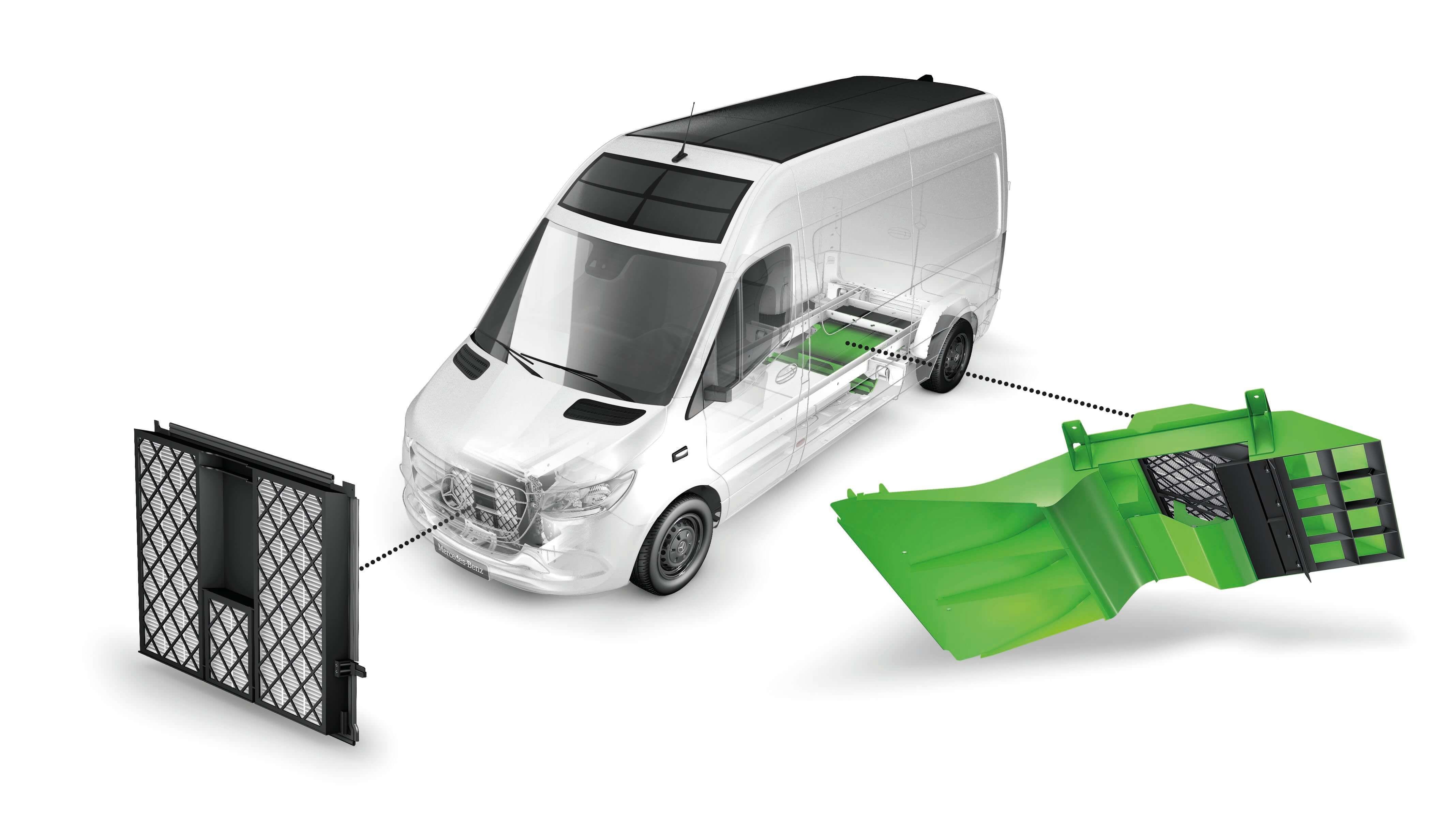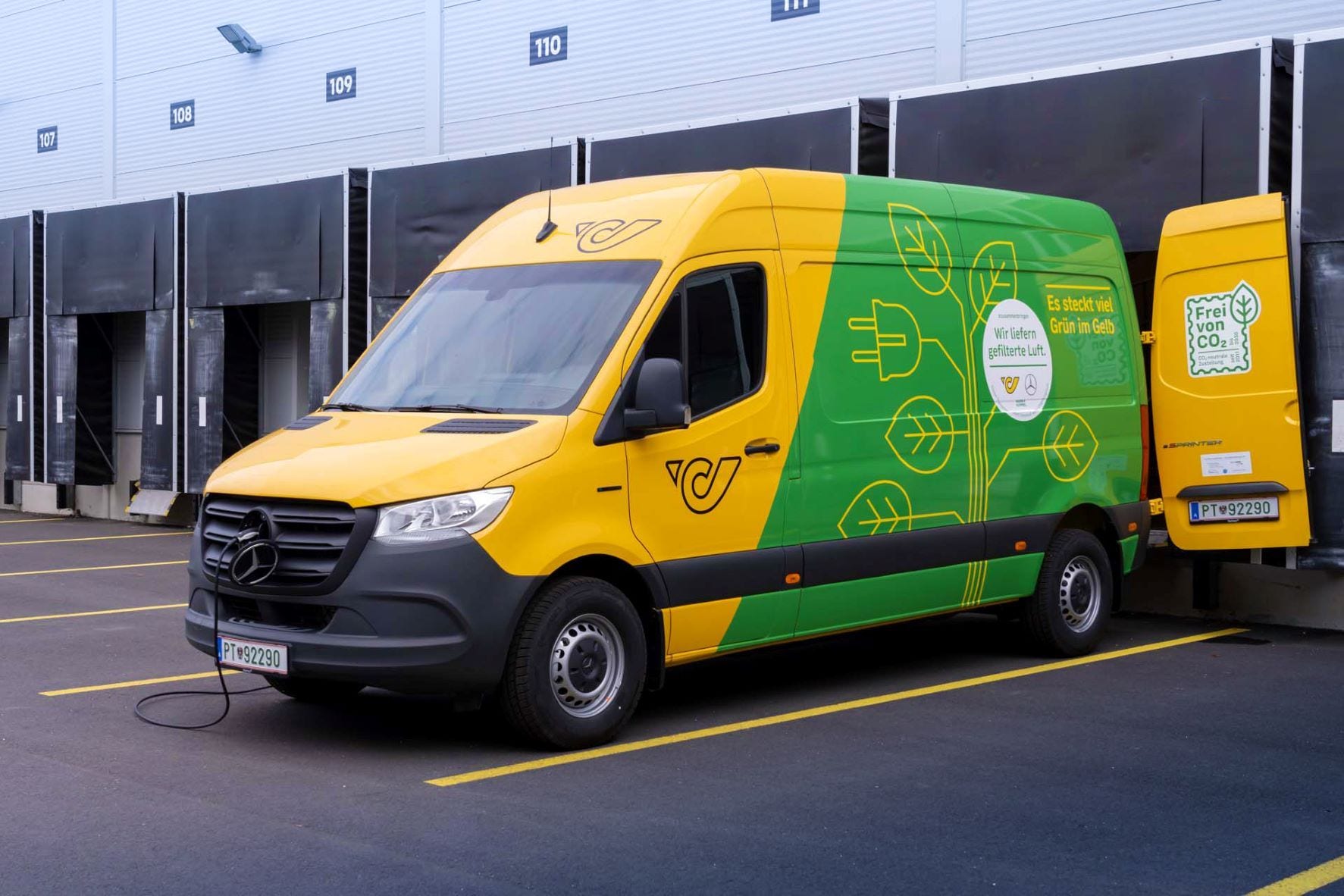Sustainable delivery and fine dust reduction
MANN+HUMMEL provides innovative fine dust particle filters for Mercedes-Benz sustainability project
The air in our cities must be improved. All experts agree on that. The World Health Organization (WHO) has just issued its new guidelines. Core points: A significant reduction in nitrogen dioxide and particulate matter levels. Air pollution is a global problem that must be tackled through cross-border cooperation and with innovative technologies.
 Mercedes-Benz SUSTAINEER with fine dust particle filters from MANN+HUMMEL
Mercedes-Benz SUSTAINEER with fine dust particle filters from MANN+HUMMEL
As a global leader in filtration technology, MANN+HUMMEL has developed reliable products and solutions to enable cleaner mobility and thus significantly improved air quality. As part of a Mercedes-Benz sustainability project, filtration specialist MANN+HUMMEL has worked with Mercedes-Benz to develop two fine dust particle filters (frontend module and underbody solution) that offset the vehicle's particulate emissions by more than 50 percent. With its technology demonstrator, the SUSTAINEER (SUSTAINABILITY PIONEER), Mercedes Benz Vans is providing us with a tangible impression of just how sustainability in urban delivery operations may look in the future.
"We are very pleased to be part of such a promising project that uses different solutions to improve air quality. Our two fine dust particle filters significantly improve the fine dust balance. The poorer the air quality, the more effective is the filtration," explains Markus Kolczyk, Vice President Original Equipment Global Engineering at MANN+HUMMEL. "Laboratory tests and simulations confirmed this effect several times. Emission-free driving and delivery in the inner city are therefore within reach.”
 Underbody fine dust filter mounted at the Mercedes-Benz SUSTAINEER
Underbody fine dust filter mounted at the Mercedes-Benz SUSTAINEER
Sophisticated technology ensures improved air quality
The underbody fine dust particle filter is located in the area of the rear axle. This is exactly where one of the biggest concentrations of particulate matter in the vicinity of the vehicle can be found. The passive filter traps the particles stirred up by the moving van and other vehicles. An optimised air duct system ensures the best possible cleansing effect. The filter needs to be replaced once a year.
The second filter is integrated in the frontend module and works in combination with the existing extractor fan to filter fine particles from the air. This means that it not only purifies the air using the airflow around the vehicle when driving, but also filters particulates from the surrounding air when the vehicle is travelling at low speed or being charged while stationary.
 Installation position of the filter systems
Installation position of the filter systems
Additionally, the vehicle is fitted with a fine particle sensor. This can measure the concentration of fine particles in the air and control the filtration level accordingly in order to maintain a target state. This also allows the vehicle to be used as a mobile monitoring station. The filter elements can easily be removed and replaced during annual servicing.
The frontend module and underbody filters reduce fine particulate emissions in the direct vicinity of the vehicle up to a particle size of ten micrometres (PM10) by over 50 percent – 35 percent during charging and 15 percent while driving. The effectiveness of the filtration system increases further when there is a higher level of particle pollution. This means that in urban areas with poorer air quality, far greater quantities of fine particles can be filtered out.
 eSprinter with integrated fine dust particle filter
eSprinter with integrated fine dust particle filter
Österreichische Post launches pilot project to test modern filter technology
Since November 2021, parcels, letters, advertising mail, and print media in Graz have been delivered with zero emissions using electric vehicles. Österreichische Post's measures thus contribute to a reduction in CO2 and noise emissions in the city and support Graz's overall smart concept. To further optimize these successes, Österreichische Post launched a pilot project together with Mercedes-Benz Vans and MANN+HUMMEL to test the modern filtration technology under real-life conditions. Two Mercedes-Benz SUSTAINEER eSprinters of Österreichische Post were equipped with optimized filters for the reduction of fine dust emissions and have been completing their routes in weekly rotation since August 2022. The filter is integrated in the front module of the SUSTAINEER and filters fine dust out of the air in combination with the suction fan already present in the vehicle. The aim is to gain insights into the effectiveness and durability of the filtration solution in real-life operation. Initial results from the test operation are expected at the end of the year.



